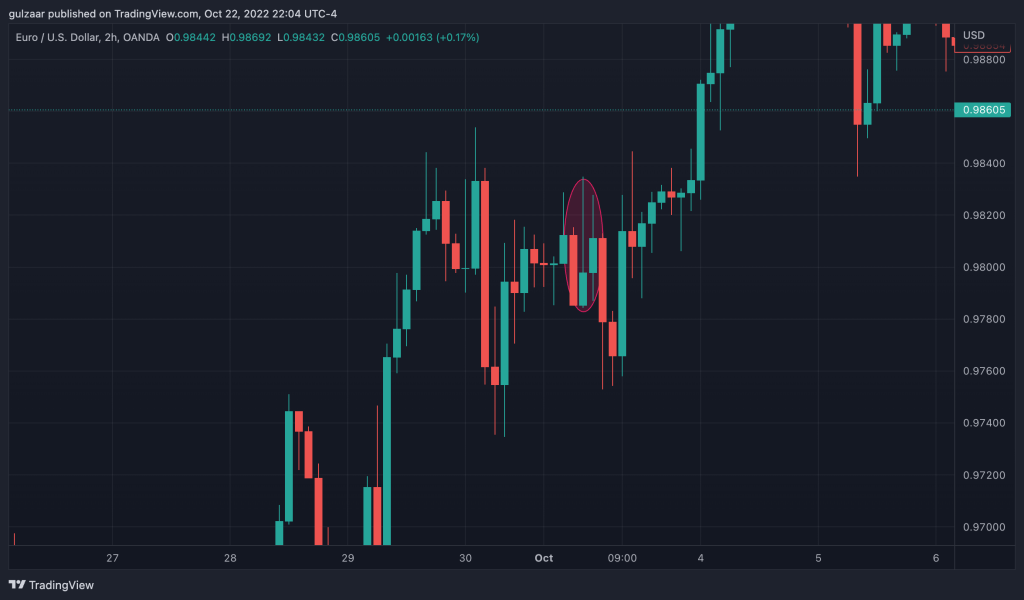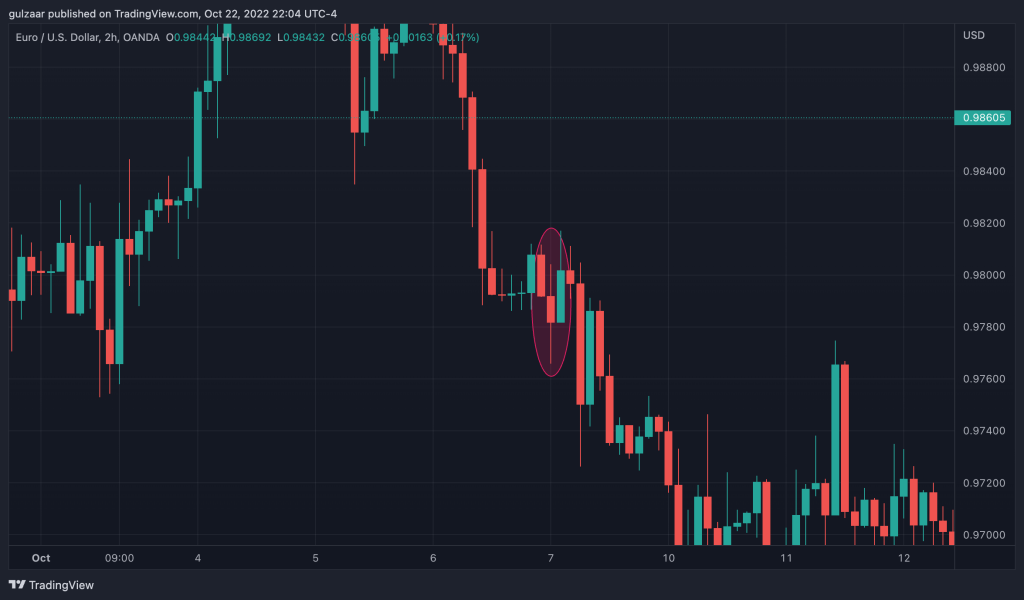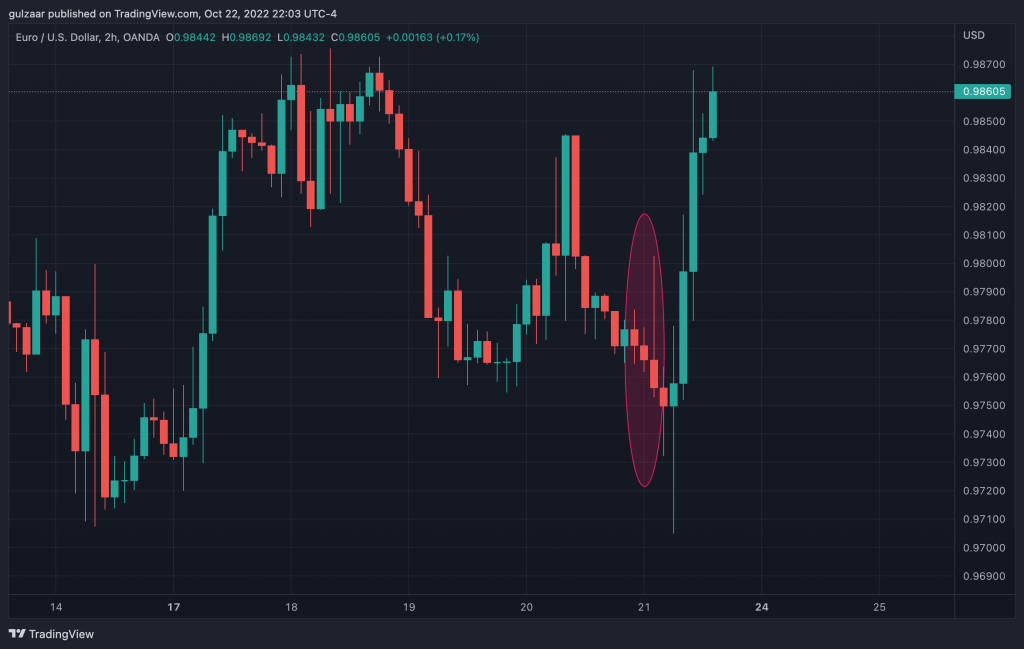Have you ever entered a trade only for the market to behave very erratically?
So what to do you do?
You hold on to the trade, hoping it will go your way, and what was supposed to be a 10 minute scalp turns into a 3-hour trade that eventually runs into a loss.
So what’s the issue? Time.
In this post, we’ll look at the best time for scalping Forex and why those times work.
Volume is key for scalping
The key to scalping Forex is understanding when there is volume in the market. Even though the Forex market is touted as a 24/5 market, there are periods when the market is slow, and periods when the market is moving much faster.
As a scalper, your goal is to get in and get out within a few minutes, limiting your risk exposure and securing profits as they come.
In order for your trades to be quick, you need to enter when the market moves many pips in a small amount of time.
This greatly increases your chances of catching some pips and greatly reduces your stress, since you’re not exposed to the market for an extended period of time.
Pre-London to London open(1 AM EST to 3 AM EST)
The 2 hours just before London open and the one hour after London open is a 3 hour window in which there is typically a lot of volatility.
Pre-London is when banks in Germany and France have started their business, and price begins to move.
This leads up to London open, when the London banks open, and about an hour or two after London banks open.
These are great times to scalp because it’s not uncommon to see huge candles form. As a scalper, your job is to try and capture a part of that candle.



Pre-New York to New York open(6 AM EST to 930 AM EST)
After London open, there is sometimes a lull between the morning hours and the time when New York traders start to place their orders.
You’ll typically start seeing volatility in the market starting at around 6 AM EST.
The volatility continues until about 9:30 AM EST, which is the open of the New York Stock Exchange.
It’s important to note that volatility can come in a burst, or continue throughout the session.
For example, there may be one big candle, and the next candles start to print very small and begin to range.
Alternatively, you can see one big candle after another.
Your goal as a scalper is to try and catch that first big candle, because that’s when you can get the best entry with the tightest stop loss.
London close(10 AM EST to 11 AM EST)
If you like to trade the New York session, you may have noticed that New York volatility continues after New York open and NYSE open all the way to about 11 AM and 12 PM EST.
This volume is from London close, when banks place their final orders for the day and cause the market to really move.
London close is also a great time to scalp if you live in the United States since you’ll probably be awake no matter which part you’re in.
New York open can be tough if you live on the West Coast because you’d have to wake up really early!
Asian open(6 PM EST)
Asian open is when the banks in Japan and Australia start their business. This is about an hour or two after New York close(5 PM EST).
During Asian open, you’ll see a lot of movement on AUD, NZD, and JPY pairs.
However, the volume is not quite as much as in London or New York.
Still, if you happen to live in a country where the most practical time for you to sit at the charts coincides with Asian open, you have to work with what is available to you.
As a scalper, you’re not looking for HUGE moves, so even if the Asian session can move your instrument of choice around 10-15 pips, you can catch your trade for the day and be done.
What is the best timeframe for scalping?
The best timeframe for scalping is the 15 minute or 5 minute chart. Some traders even use the 1 minute chart.
Whenever you scalp, you should always identify strong support and resistance areas from higher timeframes such as the 1 hour and 4 hour charts, and then watch the smaller timeframes to see how price reacts to those areas.
Can you scalp Forex at night?
You can scalp Forex at night when there is reduced volume but you’ll have to be very quick in your entries and exits.
Since there is no volume, price can behave much more erratically, so you need to secure your handful of pips and get out.
Some traders employ high-frequency methods to get in and out of trades, relying on probabilities to end up in profits after all their trades have finished executing.
Can you get rich scalping?
As long as your risk management is on point and you’re controlling your impulses, you can get rich from scalping.
No matter what your trading style is, getting rich in Forex depends on how much you risk and how much your reward is.
A scalper, a swing trader, and a position trader may all risk 1% for a 1.5% to 2% gain. In this case, all three would make 2% if they won the trade.
The scalper would make the 2% in a few minutes, but it’s also more likely that he or she will lose 1% because of the frequency of their trades.
As you swing trade or position trader? You’d also make 2% if you won, but your trades would be far less frequent(unless you place multiple trades at once, but that exposes you to a lot more risk).
One thing that I have noticed in 5+ years watching and trading the markets is that there is a point of diminishing returns after a certain number of trades.
Meaning if I’m up a few percent after two trades, the third trade will almost never work out in my favor, and if I take a few more trades after that, I either end up losing some of my gains from the earlier trades or just getting back to where I was.
Essentially, I could have just stopped at two trades and that would have been the end of it!
Conclusion
Scalping is an exciting and action-packed way to trade the Forex markets. The times I have listed here typically see the most volume and the biggest candles, so this is when you want to get in and out of the market.
